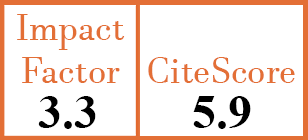Brief Papers
Obesity decreases clinical efficacy and levels of adalimumab in patients with ankylosing spondylitis
J. Rosas1, F. Llinares-Tello2, J.M. Senabre-Gallego3, X. Barber-Vallés4, G. Santos-Soler5, E. Salas-Heredia6, A. Pons Bas7, C. Cano Pérez8, M. García-Carrasco9
- Rheumatology Department, Marina Baixa Hospital, Villajoyosa, Alicante, Spain. j.rosas.gs@gmail.com
- Laboratory Department, Marina Baixa Hospital, Villajoyosa, Alicante, Spain.
- Rheumatology Department, Marina Baixa Hospital, Villajoyosa, Alicante, Spain.
- CIO-Universidad Miguel Hernández, Elche, Alicante, Spain.
- Rheumatology Department, Marina Baixa Hospital, Villajoyosa, Alicante, Spain.
- Rheumatology Department, Marina Baixa Hospital, Villajoyosa, Alicante, Spain.
- Rheumatology Department, Marina Baixa Hospital, Villajoyosa, Alicante, Spain.
- Rheumatology Department, Marina Baixa Hospital, Villajoyosa, Alicante, Spain.
- Systemic Autoimmune Disease Research Unit HGR-36-CIBIOR IMSS Puebla; and Department of Rheumatology and Immunology, Benemérita Universidad Autónoma of Puebla, México.
and the AIRE-MB Group
CER9425
2017 Vol.35, N°1
PI 0145, PF 0148
Brief Papers
Free to view
(click on article PDF icon to read the article)
PMID: 27908311 [PubMed]
Received: 13/03/2016
Accepted : 02/09/2016
In Press: 13/11/2016
Published: 26/01/2017
Abstract
OBJECTIVES:
Obesity can be a factor that affects response to anti-TNF drugs. However, studies on patients with ankylosing spondylitis (AS) are rare. We aimed to determine whether obesity affects serum levels of adalimumab (ADL), and immunogenicity and clinical efficacy of the drug in patients with AS.
METHODS:
A cross-sectional study on 57 patients with axial AS receiving ADL was conducted. They received DMARD per standard of care at their rheumatologist’s discretion. Patients’ body mass index (BMI) was obtained when ADL treatment began. Clinical response was evaluated using the Spanish versions of the BASDAI index and the ASDAS ESR index. Serum concentrations of free ADL (trough level) and anti-ADL antibodies were measured using Promonitor-ADL and Promonitor Anti-ADL ELISA kits (Progenika Grifols SA, Spain), just prior to the next subcutaneous injection of ADL.
RESULTS:
Patients with BMI >30 kg/ m2 (obese) as opposed to BMI <25 kg/ m2 (normal), presented lower blood ADL levels [5.0 (5.52) vs. 9.14 (4.3), p=0.032], increased ASDAS scores (2.58 [0.79] vs. 1.9 [0.83], p=0.03), and shorter ADL treatment time: 1.01 [0.84] vs. (1.85 [1.65]; p=0.08]), and increased BASDAI results (5.04 [2.5] vs. 3.5 [1.88]; p=0.06). Obese patients showed a lower probability of clinical response to ADL versus non-obese patients with regard to achieving BASDAI ≤4 (OR: 3.5, 95%CI: 0.84–17.19; p=0.05) or ASDAS ≤2.1 (OR: 4.64, 95%CI: 1.02–24.13; p=0.02).
CONCLUSIONS:
Of the AS patients receiving treatment with ADL, those that are obese had significantly lower serum ADL levels and decreased clinical response without an increase in immunogenicity.


